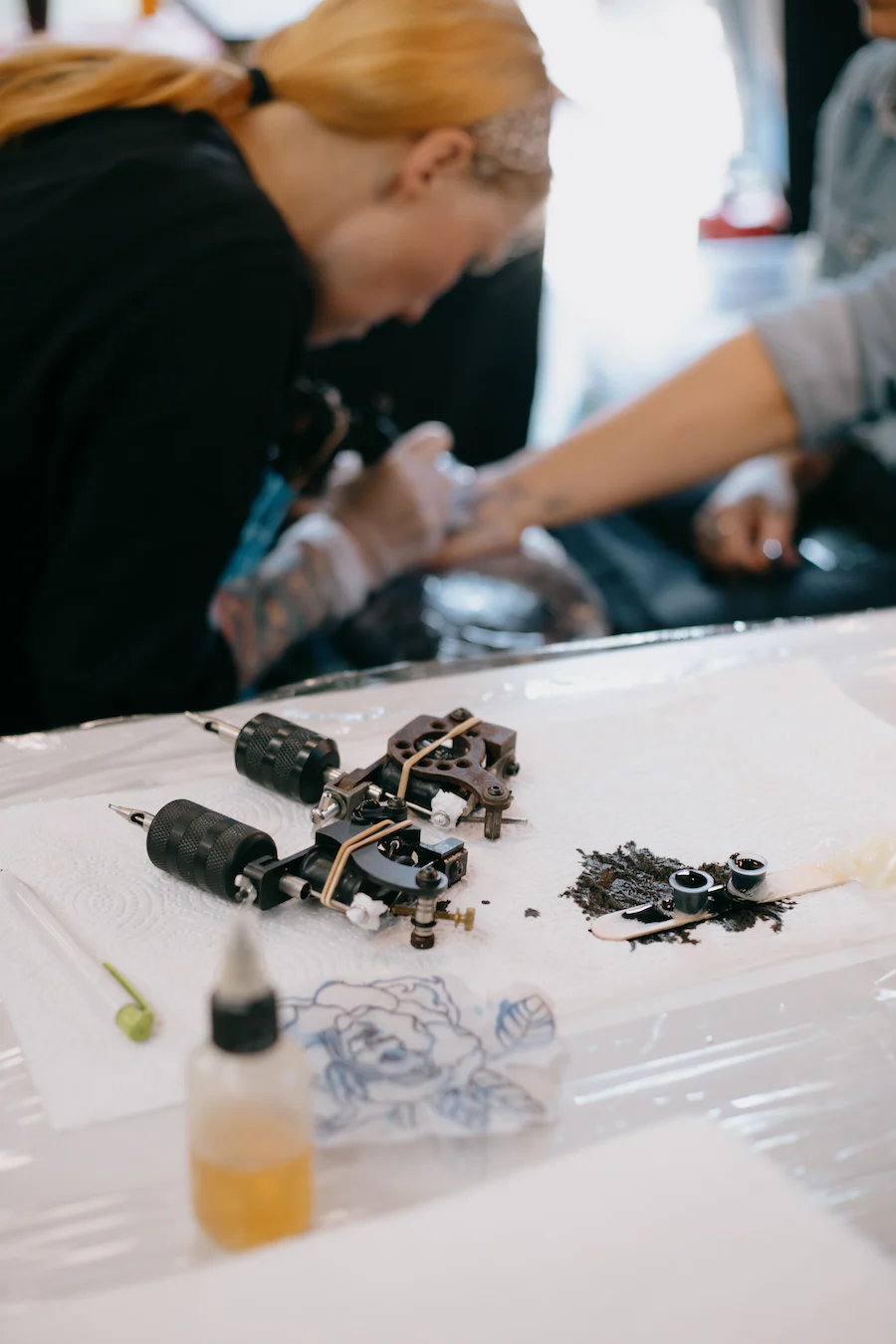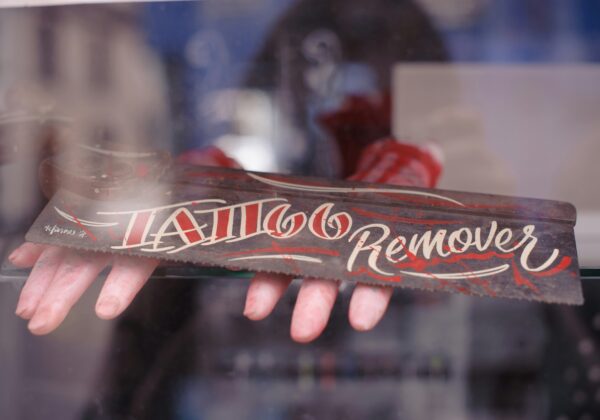Tattoo needles are specialized needles utilized in tattoo machines to introduce ink into the skin. Crafted from durable stainless steel, they are available in various configurations and sizes to cater to different requirements such as creating lines, shading, and color packing. The number of points on a needle, their arrangement, and their diameter collectively determine the specific type of work that the needle is suitable for.
We will delve into the world of tattoo needles to help you make informed decisions about which ones will bring your artistic vision to life.
Tattoo needles come in several configurations, including liners, shaders, and magnums.
- Liners: As the name implies, liners are needles primarily used for creating precise and sharp lines in tattoo artwork. These needles are typically arranged in a tight grouping, either as a single needle or multiple needles together. By penetrating the skin with precision, liner needles ensure the creation of clean and crisp lines in tattoos.
One popular type of liner needle is the Round Liner (RL), which is widely used in the tattoo industry. RL needles are configured in a tight, circular pattern, allowing tattoo artists to deliver ink in a precise and controlled manner. Whether you’re working on dot work, traditional styles, or geometric designs, RL needles are capable of effortlessly creating sharp and clean lines.
Another interesting variant of liner needles is the Hollow Liner. Unlike tightly packed liners, hollow liners are arranged to form a hollow circle at the center. This configuration is perfect for producing bold and consistent lines, making it a popular choice in tribal designs and other works that require substantial and continuous lines.
- Shaders: Shaders are needles used for filling in large areas of color or shading in tattoo designs. These needles typically have a larger diameter and a broad configuration, allowing them to hold more ink. Shaders are versatile and can be used to create smooth gradients or deep and solid color areas.
The Round Shader (RS) needles come in varying pin densities depending on the manufacturer. Primarily used for shading and color fills, RS needles are versatile enough to also be used for thick line work, making them a multi-functional choice.
Flat Shader needles consist of pins soldered in a straight line on the bar. This linear configuration provides a unique ink flow. With the ability to deliver a significant amount of ink in a single pass, Flat Shaders are excellent for geometric patterns, mandala work, and even semi-permanent makeup.
A Double Stack Magnum Shader needle offers two layers of tightly packed pins to make ink dispersion more concentrated. A configuration such as this is commonly used to shade and pack colours in intricate ways. The tighter pin arrangement allows for a more detailed color distribution, making it ideal for realistic works.
- Magnums: Magnum needles are specifically designed for blending and shading purposes. They feature two rows of needles that are angled or stacked together. These needles are ideal for creating soft shading and smooth transitions between different colors in a tattoo design.
Weaved Magnum needles are designed with interleaved or woven pins, where every second needle is slightly raised. This design facilitates better ink flow, making them a great choice for large-scale shading, blending, and color packing across a wide area.
Stacked Magnums take the standard magnum configuration and bring the pins even closer together in a stacked and dense layout. These needles are designed for detailed shading work where a tighter and more concentrated ink dispersion is needed, such as in photorealistic tattoos.
Curved Magnums, also known as soft edge magnums, feature pins that arch or curve at the center. This design reduces skin trauma and offers a softer touch when tattooing. Curved magnums are ideal for soft shading, color transitions, and blending, making them perfect for nuanced and detailed work.
Choosing the right tattoo needles is crucial to bring your artistic vision to life. There are several factors you need to consider, so let’s take a look at each one:
– Tattooing Technique:
As tattooing techniques differ, needle configurations also differ. If your expertise lies in intricate line work and detailed designs, a liner needle will be your go-to choice. For shading and fill work, shaders and magnums are better suited. It’s important to select needles that work in harmony with your preferred techniques, allowing you to achieve the desired effects in your tattoos.
– Needle Gauge:
Ink needle gauges measure the thickness or diameter of tattoo needles. Needles are available in various gauges like 3RL (Round Liner), 7RS (Round Shader), 9M1 (Magnum), and more. The gauge directly affects the ink-holding capacity and flow of the needle. A thinner gauge needle is ideal for creating finer lines, while a thicker gauge needle is better for filling in large areas. Experimenting with different needle gauges will help you achieve the desired effects in your tattoo designs.
– Needle Material:
Steel is a durable and corrosion-resistant metal that is commonly used for tattoo needles. Choosing high-quality needles from reputable manufacturers is essential for ensuring safety and optimal performance. Ink flow can be poor with low-quality needles, while lines can be inconsistent, and clients may even experience allergic reactions. So, it’s important to invest in needles made from top-notch materials.
– Safety and Hygiene:
The tattoo industry places a high priority on maintaining proper hygiene and safety standards. Make sure the tattoo needles you choose are single-use and pre-sterilized. Disposable, pre-packaged needles eliminate the risk of infections or the transmission of bloodborne pathogens. Prioritizing safety and hygiene safeguards both the tattoo artist and the client.
– Taper Lengths:
Though often overlooked, taper lengths play a significant role in tattooing. They determine the transition from the needle shaft to the point and can range from 0.25mm to 0.60mm. Taper lengths are categorized into types such as Standard Taper, Long Taper, Double Long Taper, Extra Long Taper, Super Long Taper, and Super Extra Long Taper.
The length of the taper greatly influences the precision and line width of the tattoo. A shorter taper leads to thicker lines, making it perfect for outlining and defining shapes. On the other hand, a longer taper creates a finer needlepoint, ideal for shading and creating intricate details.
Getting a tattoo requires breaking the skin barrier, so it’s crucial to prioritize sterilization. First and foremost, make sure that the tattoo needles are adequately sterilized—it’s even more important than considering the needle’s quality.
When you’re acquiring tattoo needles, double-check that they come in individual packaging that is sealed. This way, you can be certain that the needles are not only sterile but will also remain in that condition until you’re ready to use them.
Aside from sterilization, it’s essential to do some research before making a purchase. Look into reputable brands and suppliers that are well-known for their dedication to producing top-notch tattoo needles. Reading reviews and seeking recommendations from experienced artists can provide valuable insights into the quality and reliability of different needle options.
Conclusion
Selecting the perfect tattoo needle is absolutely crucial, not only for achieving the desired artistic outcome, but also for ensuring the utmost comfort and safety of your clients.
The choice of tattoo needles should ultimately be guided by your technique, the desired outcome, and most importantly, your personal preference. As you gain more experience and refine your craft, you’ll develop a deeper understanding of which needle types and sizes perfectly complement your artistic style, no matter how unique or unconventional it may be!
Remember, the right tattoo needle is like a magical wand that brings your artistic vision to life.



